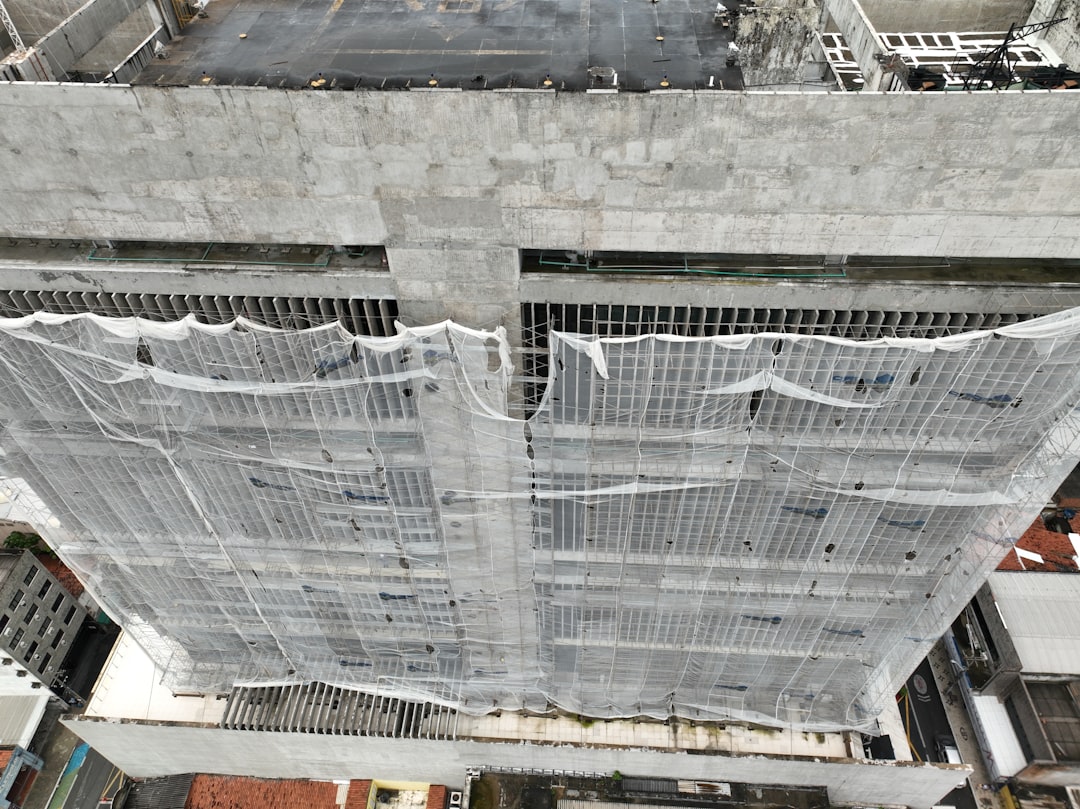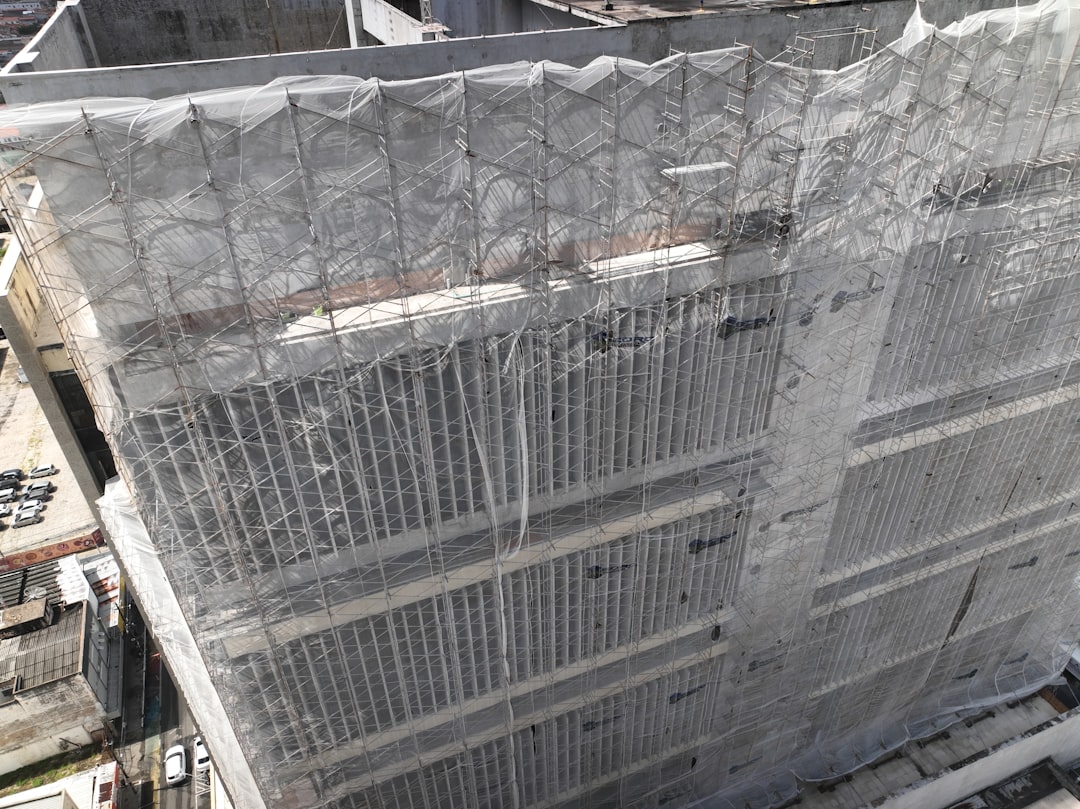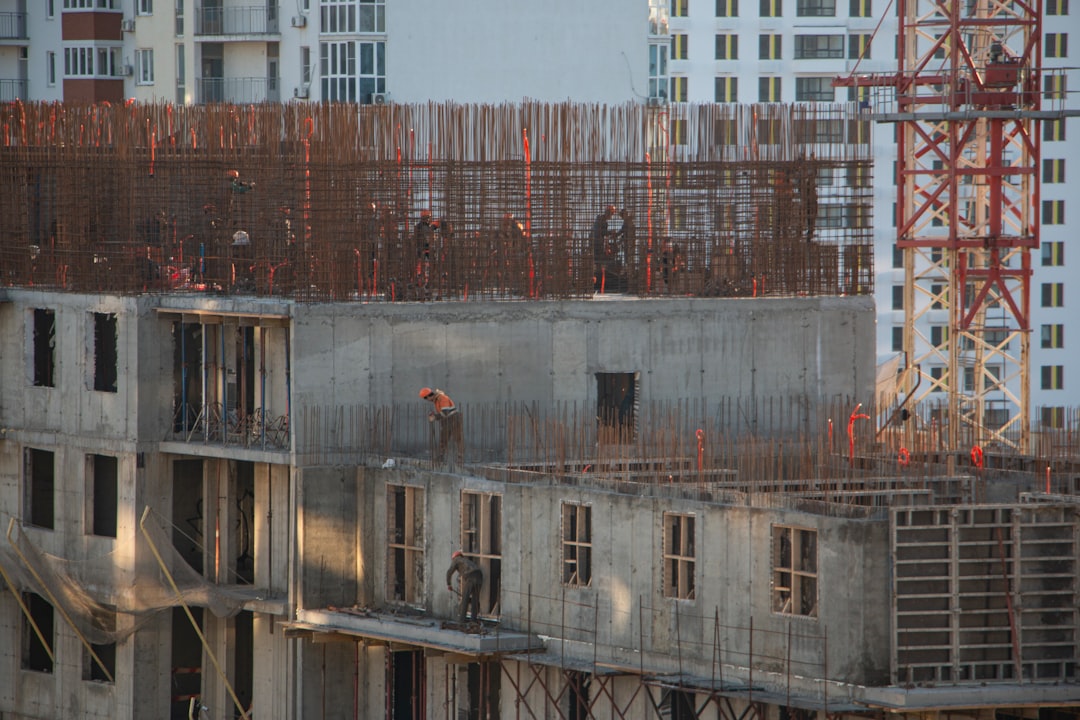

Engage prospects with a scan and streamline customer engagement with FREE QR code marketing tools by Sona – no strings attached!
Create a Free QR CodeFree consultation

No commitment

Engage prospects with a scan and streamline customer engagement with FREE QR code marketing tools by Sona – no strings attached!
Create a Free QR CodeFree consultation

No commitment
Concrete work is inherently physical, yet the client journey now begins and evolves online. Neighbors walk past a freshly poured driveway, property managers notice a polished slab at a retail site, and general contractors evaluate subcontractors on active builds. The friction arises when those moments of interest do not translate into measurable action. QR codes, especially with Sona QR, close this gap by converting hands-on, in-the-field attention into trackable digital engagement that drives quotes, schedules site assessments, and accelerates follow-up.
Replacing legacy tools like paper brochures, manual sign-up sheets, and static yard signs with scannable entry points creates a modern funnel you can see and optimize. Instead of hoping a prospect remembers your website or phone number, a single scan opens a tailored journey: viewing project galleries, checking references and safety records, submitting measurements for an estimate, or scheduling a call. For creative ideas that convert, explore innovative QR advertising. These experiences bring clarity to attribution and speed to revenue while also improving the client experience.
By treating every sign, vehicle, and handout as an onramp to your digital funnel, you ensure that in-person interest becomes measurable demand. With consistent tagging and follow-up, QR codes evolve from a simple scan into a full feedback loop that connects project delivery, marketing, and sales.

Many concrete contractors rely on reputation, job site visibility, and referrals. These are powerful channels, yet they can be hard to measure and even harder to scale without a digital bridge. QR codes help teams capture interest at the moment it happens, then translate it into context-rich engagement. For a broader overview, see this primer on QR code marketing. For crews who work in the field all day, QR codes offer an always-on way to collect leads and route them straight to a system that ensures fast follow-up.
Speed is essential. If a property manager needs a slab repair or a homeowner wants a stamped concrete patio, the first credible contractor to respond often wins the job. QR codes reduce the distance between curiosity and conversation. Scanners can jump directly to a quote request, upload site photos, or reserve a time on a sales calendar. This lets office staff and estimators respond quickly with tailored information rather than chasing voicemail or deciphering handwritten notes.
Taken together, these advantages help concrete contractors move from guesswork to evidence. You can see which crew yard signs generate quotes, which neighborhoods engage on weekends, and which trade show handouts convert to meetings.

Different jobs benefit from different engagements. A procurement manager might need a vCard to save your estimator’s contact, while a homeowner needs a simple, mobile-friendly quote form. Choosing the right QR format ensures a fast and relevant action that fits the scanner’s context.
Web links are the most versatile since they can drive to project galleries, pricing pages, and quote forms. For crews and trade partners, vCards solve the problem of lost business cards and delayed follow-up; here’s how to share contact info instantly. Forms accelerate intake and help your team qualify leads with site type, square footage, desired finish, and timing. Wi-Fi access can streamline guest connectivity at showrooms or site offices for walkthroughs. App downloads matter when you offer a client portal or scheduling tool.
Dynamic QR codes are especially useful for contractors. They let you change a destination without reprinting, run A/B tests on landing pages, and see performance by code. Static codes are suitable for evergreen items like emergency hotline numbers or permanent safety notices. As a rule of thumb, use dynamic codes for marketing and sales workflows, and static codes for permanent operational utilities, and start creating QR codes for free.

Worksites, neighborhoods, and industry events are full of untapped interactions. Each physical touchpoint can become a measurable channel once it includes a QR code. Explore fresh QR code marketing ideas. Prioritize locations where interest is highest and where the next step is obvious.
Construction sites are your living portfolio. Prospects are already curious when they see crews in action, equipment deployed, and visible progress. Vehicles extend your reach as traveling billboards that can collect leads even when parked at a supply yard or in a residential neighborhood. Equipment stickers can support operations with rapid access to maintenance procedures, vendor contacts, or service request forms. Trade shows compress hundreds of interactions into a few days; QR codes can make sure none of them are lost. Direct mail can be revived as a targeted channel when it includes a scan-to-quote path.
Mapping these placements to distinct landing pages lets you identify which environments produce the best pipeline. Over time, shift budget and inventory to the placements that win jobs.

Clients have varied needs, from urgent repairs to design-heavy decorative work. QR codes support each moment with a right-sized action. What matters most is aligning the QR destination to the task at hand, then making it effortless to complete.
For high-intent moments like seeing your crew on a site, send scanners to a fast quote flow with minimal form fields. For research-oriented moments like trade shows, prioritize rich galleries and downloadable specs. For post-project moments like warranty and maintenance, keep the experience simple and mobile-first to encourage compliance and reviews.
Each of these use cases reduces friction for clients while feeding your operations with better data. Your team responds faster because the scan tells you who, where, and why.
Every scan offers a context clue. Was it on a residential door hanger, a commercial job site banner, or a trade show demo wall? That context should shape your follow-up and your retargeting audiences. The goal is to segment by intention and environment so your next touch is timely and relevant. See intent-driven retargeting for tactics you can apply after each scan.
Create unique QR codes for the different stages of the buyer journey. An awareness code near a neighborhood project might lead to a gallery, while a consideration-stage code on a materials board could open a finish comparison tool. Conversion-stage codes on price sheets and proposal packets can route to a decision survey or contract signature. By tagging audiences based on what they scanned and where they scanned it, you give your CRM automation the signals it needs to prioritize the hottest prospects.
When every scan builds or enriches a profile, your database shifts from anonymous traffic to known, segmented demand. That is how you shorten sales cycles and improve close rates.
Marketing for concrete services often spans many channels, from door hangers and site banners to Instagram stories and trade shows. QR codes serve as connective tissue that consolidates disparate touches into a coordinated journey. This makes your campaigns measurable and your follow-ups consistent.
By placing dynamic codes across your most common materials, you learn which channels deserve more investment and which messages actually move people to act. You can also orchestrate cross-channel sequences, like sending a financing options email after a scan from a pricing board or triggering a retargeting ad for garage floor coatings after a trade show download.
With a centralized platform like Sona QR, you can manage your entire code inventory, monitor performance by placement, and sync scan activity with your CRM and ad platforms. This creates a single source of truth for field and marketing activity.
Pick one high-impact problem to solve first. For many contractors, the best starting point is converting job site curiosity into booked estimates. Define a specific goal such as increase quote requests from yard signs by 30 percent in target neighborhoods. Align this with a short, mobile-first landing page and a clear scheduler.
Think through who will scan, where they will be, and what they need. A homeowner walking a dog wants quick reassurance and an easy path to request a quote. A property manager wants a straight route to an estimator with commercial experience. Clarifying the audience and outcome keeps your campaign focused.
Select a code format and determine whether it should be static or dynamic. Marketing and lead capture should be dynamic so you can update destinations and gather analytics. Operational uses like permanent safety notices can be static to minimize administrative overhead.
Map the code to the destination experience. If you are capturing leads, send scanners to a short form that collects essential details, not a general homepage. If you are supporting spec downloads, connect to a hub with options filtered to the scanner’s context such as interior polished floors versus exterior slabs.
Design with field conditions in mind. Use high-contrast colors, adequate quiet space around the code, and a minimum size that supports scanning from a sensible distance. Include a crystal-clear call to action such as Scan for a fast quote, and use directional arrows or brackets to make the code stand out on busy surfaces.
Before printing, test scannability across devices, angles, and lighting. Validate the destination renders correctly on mobile, that the form fields are easy to complete, and that the confirmation page sets expectations for next steps like response time or preparation required for a site visit.
Roll out your codes where attention is highest. Begin with yard signs at active sites, fleet vehicles, and any handouts used by estimators. For commercial work, prioritize trade show materials, GC pre-bid packets, and equipment stickers that link to service or documentation.
Track each deployment with unique codes and UTM parameters. This allows you to see which placements drive scans and which convert to quotes. Use early data to refine placement, adjust CTAs, or tune landing page messaging.
Use analytics to monitor scans by location, time, and device. Compare conversion rates from different placements and creative variations. If a code gets many scans but few form submissions, simplify the form or change the offer. If scans are low, improve code size, contrast, or CTA placement.
Integrate scan data with your CRM to ensure fast follow-up and measurable outcomes. Route leads to the right sales owner based on audience tags and context. Review weekly performance dashboards to identify your top-producing codes and redeploy inventory to the best locations.

For many contractors, the frustration is not the lack of interest. It is the difficulty proving which marketing activities create pipeline and which interactions speed up deals. When QR codes sit inside a connected analytics stack, you can trace visibility at the fence line all the way to a signed contract. For measurement tactics across channels, start with offline attribution. This clarity helps teams invest confidently and remove waste.
A full funnel view starts with the scan, continues through on-page engagement, and ends with revenue attribution in your CRM. You can see which codes drive quote requests, which neighborhoods convert, and how quickly your team responds. This makes sales and marketing collaboration simple; everyone has the same data and can refine their part of the process.
Sona QR captures scan-level data and routes it to Sona.com for journey analytics and revenue attribution. Together they provide the instrumentation required to treat field marketing as a performance channel with ROI you can defend and scale.
As QR programs mature, the gains come from consistency, staff enablement, and small creative improvements. The most successful contractors treat QR as a standard operating procedure across field work, sales, and customer service.
Keep tightening the links between scan and action. Trim form fields, offer calendar scheduling, and show clear proof such as photos of nearby work. Use the data to prioritize where crews place signs, which routes sales reps canvass, and which events deserve repeat investment.
Creative examples include adding QR codes to delivery receipts that route to quality checks and warranty registration, placing a code on epoxy sample boards that opens a finish comparison tool, and printing a Scan for emergency repair sticker on the inside of facility manager binders.
Concrete contracting thrives on visible work and strong relationships. QR codes help translate that visibility into timely, measurable engagement. When every sign, vehicle, and handout invites a scan that opens a clear next step, your offline reputation gains a digital engine that captures demand at the source.
The impact is practical and cumulative. Faster responses win more jobs, dynamic content reduces reprints, and analytics reveal where to focus budget and crew time. Over months, your database fills with segmented, high-intent contacts, and your team builds a repeatable process from first scan to signed contract.
Contractors who adopt QR codes as a standard part of their marketing and operations gain a durable advantage. They respond faster, learn more from the field, and show proof of performance that guides smarter decisions. If you are ready to modernize your offline-to-online funnel, start by converting one high-traffic placement into a dynamic, trackable QR experience. Expand from there, and let the data show you the next best move. With tools like Sona QR and Sona.com, you can generate codes, manage campaigns, and attribute scans to revenue with confidence.
QR codes have transformed the concrete contracting industry from traditional, manual processes into streamlined, efficient workflows that drive measurable business growth. Whether it’s accelerating project access, improving client communication, or enabling faster equipment tracking, QR codes replace cumbersome paperwork with instant, mobile-friendly solutions that capture real-time data and optimize operations on every job site. Imagine having immediate visibility into project status and asset usage—all at your fingertips.
With Sona QR, you can create dynamic, trackable QR codes in seconds, update access permissions instantly without reprinting, and connect every scan directly to your project management and billing systems. No more delays, no lost information—just smarter, more profitable concrete contracting workflows. Start for free with Sona QR today and turn every scan into seamless access, enhanced productivity, and greater client satisfaction.
Choose a contractor with visible work, strong reputation, and easily accessible digital engagement channels like QR codes that provide project galleries, references, and scheduling options.
QR codes turn passive offline materials into dynamic tools that enable fast lead capture, trackable engagement, easy content updates, and measurable marketing impact.
Use dynamic QR codes with analytics to monitor scan volume, location, time, and device, and integrate this data into your CRM to link scans to quote requests and closed deals.
Innovative uses include QR codes on yard signs, vehicles, equipment stickers, trade show materials, and direct mail to enable seamless offline-to-online engagement and real-time lead capture.
QR codes provide a frictionless way for prospects to access quote forms, schedule visits, view project galleries, submit feedback, and get emergency repair information instantly from physical touchpoints.
Use Sona QR's trackable codes to improve customer acquisition and engagement today.
Create Your FREE Trackable QR Code in SecondsJoin results-focused teams combining Sona Platform automation with advanced Google Ads strategies to scale lead generation

Connect your existing CRM

Free Account Enrichment

No setup fees
No commitment required

Free consultation

Get a custom Google Ads roadmap for your business






Launch campaigns that generate qualified leads in 30 days or less.
